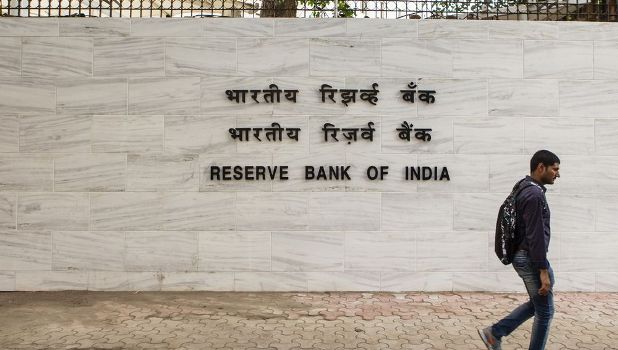The Reserve Bank of India (RBI) is expected to deliver a 25 bp rate cut amid India’s benign inflation on Thursday afternoon, with the aim of stimulating the nation’s economic growth that slowed to 5.8% yoy in the January-March quarter from 6.6% the previous three months. Lower crude oil prices also boosted the prospects of a cut in interest rates, according to the latest research report from Scotiabank.
Known for his contrarian calls in the past, Gupta is taking guidance from Governor Shaktikanta Das’ comments in Washington in April that central banks could be more flexible in the size of rate adjustments, rather than sticking to the usual moves of 25 basis points at a time.
Read More : India’s Central Bank Faces Calls for Rate Cuts – Gold Silver Reports
Gupta sees inflation reaching 3.3 per cent in May, which is well within the RBI’s target range of 2 per cent to 6 per cent, with economic growth likely remaining weak for the next two quarters.
Read More : USD/CNY consolidates around 6.9050 Mark, People’s Bank of China sets Yuan mid-point at 6.8822
“Taken together with a more dovish Federal Reserve, US-China trade tensions, continued fiscal discipline by Prime Minister Narendra Modi’s government and tight liquidity conditions, there are plenty of reasons for policy makers to move by 35 basis points,” he said.
“Fading fiscal-rupee risks, after PM Modi’s re-election, should allow a cut greater than 25 basis points, in line with Governor Das’ out-of-the-box proposal,” Gupta, based in Mumbai, said in a BofA Merrill Lynch Global Research note.
Of the 34 economists surveyed by Bloomberg, 23 expect the RBI to cut its policy rate by 25 basis point to 5.75 per cent this week.
Kunal Kundu of Societe Generale SA is predicting a 50 basis-point reduction, Bank of America Merrill Lynch sees a 35-point move, and the rest are forecasting no change.
The INR FRA curve is now pricing in a 24 bp rate cut within one month, consistent with our call for a June rate cut. Cogencis reported on May 13 that the RBI has been asked by the government to shift to a surplus-liquidity stance.
At the moment, the banking sector liquidity is now in a neutral zone. In addition, the RBI is reported to lay out a strategy through which it would unclog the flow of funds to non-banking financial companies (NBFCs) and provide more funds to banks.
“We expect the RBI to infuse more rupee liquidity and spur credit supply growth. It will boost Indian equities and bonds further together with rising expectations of more structural and market-oriented reforms to be introduced during PM Narendra Modi’s second term, supportive of the INR as well,” the report added.
While most major economies reported contracted factory activity in May, India’s manufacturing PMI rebounded to 52.7 last month from 51.8 in April. It is expected to prompt foreign investors to pour more funds into local financial markets. In May alone, foreign investors purchased a net USD1,423 million and USD537 million of Indian equities and bonds respectively.
The Economic Times reported Monday that India will soon reactivate the alternative mechanism that was first put in place by the previous Narendra Modi administration to speed up strategic sales that could attract some capital inflows.
The mechanism will help expedite decision-making, with IPOs of some PSUs likely to be pushed. It has targeted to raise INR900 billion in FY2019-20 from the so-called disinvestment, but the Department of Investment and Public Asset Management or (DIPAM) may be expected to exceed this to meet higher resource needs for not just capex but also new social welfare programmes.
The target could be reviewed ahead of the full budget to be presented on 5 July, according to the Indian media.
“We remain bullish on the INR and would like to sell USD/INR now at 69.3 with a target of 67.0 and a stop of 70.5, while keeping a close eye on oil prices and US-China trade tensions. Meanwhile, India’s increasing foreign reserves will help slow the pace of appreciation in the INR going forward, in our opinion,” the report further noted in its comments.
